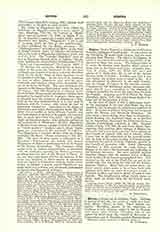

Hippos (Ippos, HIPPUS) a titular see of Palestina Secunda, suffragan of Scythopolis. It was a town of the Decapolis, 30 stadia from Gadara, and the same distance from Tiberias. The district of Hippena, in which it was situated, touched the boundaries of the districts of these two towns. The Talmud refers to it under the Semitic form Susitha, which means a horse, just as the Greek word does. Josephus mentions it (Antiq., XIV, viii; XVII, xiii, etc.) and speaks of it (Bella Jud., II) as one of the eastern frontier towns of Galilee. Eusebius says that it was near Aphec, the modern name of which is Fik. It is also mentioned by Hierocles in the sixth century, and by George of Cyprus in the seventh century. Conquered by the Machabean prince Alexander Jannaeus (106-79 B.C.), according to the chronicle of Georgius Syncellus, the town was taken from the Jews by Pompey. Augustus gave it to Herod the Great (Josephus, Antiq., XIV, viii), after whose death it became part of the province of Syria.
In the time of Christ it was a semi-pagan town. At the beginning of the war with Rome the Jews sacked it, and in revenge the inhabitants expelled all Jews. It opened its gates to Vespasian, and prospered under the Roman and Byzantine Emperors. Its coins form a series dating from Nero to Commodus. Greek learning was honored there, as is testified by an inscription discovered by Clermont-Ganneau (Etudes d’archeologie orientale, I, 142). Lequien (Oriens Christ., III, 709-12) and Gams (Series Episcoporum, 454) mention three bishops of Hippos between the fourth and sixth centuries: Peter, present at the Councils of Antioch (358) and of Seleucia (359); Conon, who in 518 subscribed to the synodal letters sent by John of Jerusalem to John of Constantinople concerning Severus of Antioch; Theodore, present at the Council of Jerusalem (536). Eubel (Hierarchia Catholica, I, 288) mentions six Latin bishops of Hippos at the end of the fourteenth and beginning of the fifteenth centuries. The most probable opinion identifies Hippos with the modern Kal’at el Husn, which realizes all the known topographical data. It is situated on the side of the Wadi-Fik, on one of the eastern hills that run along the lake and the Jordan, opposite Tiberias. Many ruins are found there; one broad central street seems to have been lined with columns, and there are ruins of a pagan temple, a Christian basilica, and broken pieces of columns and capitals. The neighboring village Susieh seems to retain under an Arabic form the old Semitic name Susitha.
S. SALAVILLE

